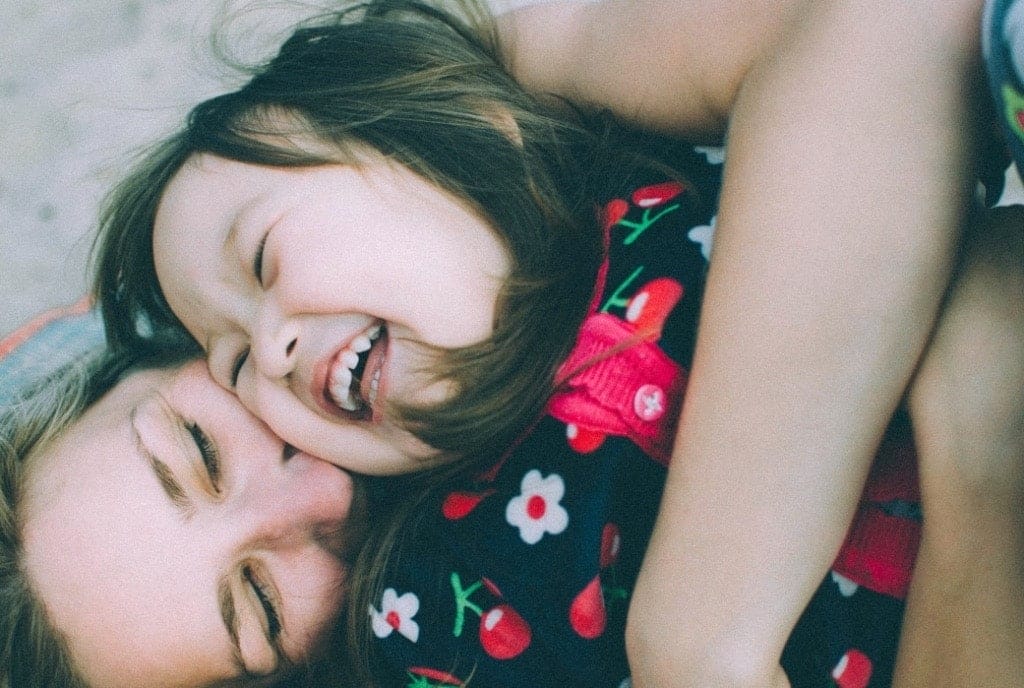Why ‘connected parenting’ is the secret to happy families

Responding to irrational requests with positivity isn’t always easy. Here’s how to replenish your own well.
Your 4-year-old demands a bowl of ice cream for breakfast. You sense a forthcoming meltdown and quickly evaluate your parenting-style options:
1. Permissive: Say “yes” (then prepare to serve cookies for lunch and cake for dinner).
2. Authoritative: Say “no” directly and firmly (then prepare to stand your ground as there will likely be a protest).
3. Exhausted: Scream “never” (because it’s only 7:15 a.m. and you’re already exhausted).
4. Denial: Pretend none of it is happening and hide in the bathroom for a while. (It is the morning after all; you could conceivably be getting ready.)
5. Connected: Empathize (e.g., “I hear you—yum!”); be playful (e.g., “Why not make it a sundae?”); and then guide your child toward another option (e.g., “How about we save that for the weekend and we eat it together?”)
Although many of us probably use a mix of the styles above, most may lean in one direction or another. I try to practice as well as advocate for connected parenting, aligned with a conscious, positive and peaceful approach. Yet this approach is not for the faint of heart.
Connected parenting is really just what it sounds like—in every situation, you try to empathically connect with your children and see their perspective before guiding them.
While I firmly believe connected parenting reaps meaningful relationships for both parents and children, I also feel that a vital piece of the discourse is missing. We fail to be open about the amount of energy this parenting style requires.
In fact, of all the parenting examples above, connected parenting requires the most effort in many respects.
Here are some of ways in which additional human resources are required:
1. Time: Connected parenting often takes more time. Saying “no” is clearly faster than empathizing with playfulness and humor.
2. Creativity: It’s much easier for us to access short, direct phrases such as “Don’t do that” or “Please stop” versus some of the phrases I encourage when our kids are angry, anxious or tired of hearing no. Consistent creativity takes practice and effort.
3. Emotional space: When we give to our children in a connected way, we are giving them part of ourselves, emotionally speaking. While mindful presence with our children can be fulfilling, it can sometimes be emotionally consuming.
4. Physical stamina: Connected parenting includes connected body language—getting close to your child, kneeling to his or her level and being playful. There is definitely physical exertion involved in connected parenting.
5. Distress tolerance: Connected parenting allows children to feel their feelings, including sadness, anger, jealousy and negativity. However, when our children are uncomfortable, we often feel the same. So part and parcel of connected parenting involves the practice of tolerating big, uncomfortable emotions in our children and ourselves.
6. Self-regulation: To step into a connected space with a child throwing a tantrum, consistently defying us, or being physically aggressive, we have to regulate our own emotions. We have to be the calm we want to see in our child. Research reveals that self-regulation is a finite resource. Used throughout the day, it depletes and requires replenishment.
After a long day at work or a long week, it may feel like the resources necessary to connect with our children are scarce. This is especially true when our kids are not “going with the flow” of our intentions or just flat-out defying us. Sometimes it feels easier to adopt a style of parenting that frankly requires the energy we have left in our tank.
So, how can we maintain our choice of parenting style while attending to our own well-being? There’s no magic wand, or one quick-fix to erase all of the challenges of parenting, but there are certainly steps we can take to replenish our tanks.
We need to prioritize self-care, even when we don’t have time—especially when we don’t have time. This means that we need to take consistent moments of mindfulness throughout the day. We need to dip into a book or interest that is solely for us. We need to laugh more. Not just a giggle here and there, but good old-fashioned belly laughter.
We need to regularly zoom-out and remember why we are making the choice to parent in a connected and conscious style. Our intuition has led us to a belief that our children will thrive with this style of parenting. The research is beginning to support our knowing that children of highly empathic parents thrive–they are physically healthier and psychologically more balanced.
We need to support one another and be open about the idea while parenting in style where connection and consciousness are a priority, sometimes it can be exhausting. Finally, let us recognize that ironically, or maybe even poetically, what we sometimes believe is leading to our emotional depletion–our children–can often be the source that, with the a simple gesture–a smile, a hug, an I love you–replenish our souls.


































